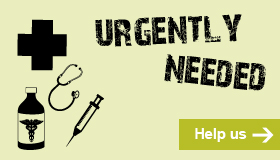Village dog project
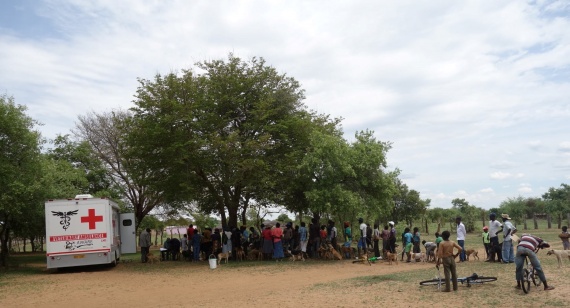
Africa's human population reached 1 billion in 2009. It had doubled in just 27 years!! By 2018 it was 1,3 billion, accounting for 16% of people on the planet. The UN predicts that between now and 2050, more than 50% of global population growth will occur on the continent, by when Africa will be home to some 2,5 billion people.
The biggest threat to wildlife in Southern Africa is loss of habitat through encroachment by the ever expanding human population. Protecting a wildlife area in Zimbabwe is pointless without buy-in from adjacent local communities. The communities must experience benefit from the conservation area. These communities invariably rely heavily on domestic animals. Livestock are regarded as the main form of currency, donkeys as the main form of transport and dogs as an important form of security against wild predators.
AWARE believes that improving the HEALTH of domestic animals adjoining wildlife areas will benefit:
-
The domestic animals directly by improving their standard of health and welfare and preventing diseases through vaccination and population control;
-
The owners of these animals by improving their livelihoods. This should reduce encroachment into the Parks for the purposes of subsistence poaching and harvesting wood by cutting down trees. It also reduces the occurrence of zoonotic diseases (those that can be transmitted from animals to man), e.g. rabies in man.
-
The wildlife in the adjoining area by reducing poaching, hunting with dogs, and limiting the spread of disease from domestic animals into wildlife populations. Through education, human-wildlife conflicts can also be mitigated.
These conservation areas are invariably remote, without electricity or running water, in which both humans and animals survive the toughest conditions Africa has to offer without access to even basic health care. Most of the people living in these remote regions are extremely poor and domestic animals are their primary resource. There are even cats to keep rodents away from stored grain. Therefore, providing a much needed health care service to these animals, with an emphasis on population control, can have a direct effect on the quality of both human and animal life.
Keeping a check on the disease status of domestic animals adjoining Parks is also important as diseases are often transmitted between domestic and wild animals and vice versa. This is particularly important for wild carnivore populations, which are vulnerable because of their relatively small sizes and susceptibility to fatal viral diseases like Distemper and Rabies. An example of the latter is in the Kgalagadi in Botswana where lions succumbed to a fatal canine distemper outbreak thought to originate in domestic dogs living in the surrounding areas. Whilst performing prophylactic campaigns, blood samples may be taken from the animal population in an area so that exposure to disease pathogens can be detected.
Working in these marginal areas also provides good first hand knowledge of other threats to wildlife, which are mainly borne out of conflict with ‘problem animals’, e.g. poisoning of hyaenas.
History and update on AWARE's sterilisation programme...
AWARE's sterilisation programme had modest beginnings back in 2009, when a passionate group of four veterinary volunteers gave up ten days of their lives to venture into Maramani Communal Land (part of the Greater Mapungubwe Peace Park) where they set up a "camp clinic" to sterilise and vaccinate as many rural dogs as possible (read more at the bottom of this page). By the end of this humbling and gratifying campaign, in which 90 under-privileged curs were sterilised, and 165 vaccinated, Frontlined and de-wormed (all free of charge), our hearts were set on repeating this precedent as often as resources would allow us to do in the future. It didn't take long to realise that obtaining the resources was the limiting factor for this project. Nonetheless, we published our equipment "wish-list" on our website - including a purpose built mobile spay unit (pie in the sky?) - and donations started dribbling in.
Fast forward to September 2015 and our ninth excursion - fittingly back in Maramani - after similar successful spay and neuter campaigns all over Zimbabwe. By the end of this trip AWARE had performed a total of 624 free small animal sterilisations, and vaccinated, Frontlined and de-wormed 6377 village dogs. Critically, we were accompanied for the second time on a rural dog campaign by a very generous benefactor and his girlfriend. Brian had initially been drawn to AWARE's rhino volunteer programme, but ultimately fell for the plight of scrawny village mongrels. It was a surreal moment in April 2016 when I first clapped eyes on "Snippy" (as she would become known), parked in the customs lot of Plumtree border post. Thanks to our incredible benefactor, AWARE was the proud new owner of a mobile spay unit extraordinaire, complete with oxygen generator, anaesthetic machine, running water, prep table and dog kennels. This was a game-changer.
To make full use of the mobile clinic, we needed full time veterinary staff to operate it, and ongoing funding. "Team Snippy", comprised of Dr Eugene Mabika and Vet Nurse Rodwell Kamunda, was born and was initially subsidised by Brian. By the end of January 2017, the team had sterilised a further 654 dogs and 17 cats, and had vaccinated 1297, bringing the overall totals to 1278 sterilised and 7674 vaccinated. A further 105 dogs were treated for a variety of ailments that would not have otherwise received treatment.
Towards the end of 2016 we submitted a proposal for financial assistance to the amazing UK based organisation Dogs Trust Worldwide. We were absolutely delighted to find that we met their criteria to perform a 6 month rural dog sterilisation and vaccination project based solely around Chipinge National Park - one of the wildlife areas that AWARE has conservation interests in. On completion of this project in 2017, a further Dogs Trust Worldwide grant was approved for 2018, and then 2019, encompassing not only Chipinge but the whole of Tsholotsho district which lies adjacent to the southern boundary of vast Hwange National Park. This allowed us to massively increase our vaccination coverage. 2752 dogs were vaccinated for 5n1 and rabies in 2017, 9166 in 2018 and 11247 in 2019! During the course of the project, 605 dogs and 41 cats were sterilised in 2017, 626 dogs were sterilised in 2018, and 629 dogs in 2019. A total of 1693 dogs also received needed medical or surgical attention. Thanks to the lifeline thrown to us by Dogs Trust Worldwide, this project continues to run in 2020, providing nearly 12000 rural dogs with disease prophylaxis and veterinary care that for most will be life-changing.
We feel our sterilisation and vaccination programme has enormous conservation value, as well as improving the welfare of village dogs, and raising awareness of animal welfare to rural people.
The picture below shows the interior of "Snippy" the mobile spay unit.
Shashe Sterilisation Campaign September 2015
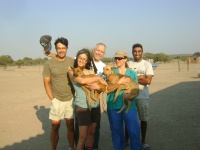 The AWARE team revisited Shashe communal land in the Greater Mapungubwe Trans Frontier Conservation Area, the corner of Zimbabwe which borders both Botswana and South Africa at the confluence of the Limpopo and Shashe rivers. It is also the site of AWARE's original groundbreaking sterilisation campaign performed back in 2009. We wanted to return to an area that we had operated at previously to check what effect, if any, our original campaign had had. The dogs in this wildlife area had also not received any government rabies vaccinations, and as painted dogs pass through the area, it is crucial to prevent rabies outbreaks, and other diseases such as canine distemper, from occurring. We were fully subscribed every day, performing between 14 and 17 spays and neuters daily. By the end of the campaign we had safely operated on 73 animals, and vaccinated nearly 300 dogs. All dogs received de-wormer, and Frontline or Certifect for fleas and ticks, and many dogs were also treated for their ailments.
The AWARE team revisited Shashe communal land in the Greater Mapungubwe Trans Frontier Conservation Area, the corner of Zimbabwe which borders both Botswana and South Africa at the confluence of the Limpopo and Shashe rivers. It is also the site of AWARE's original groundbreaking sterilisation campaign performed back in 2009. We wanted to return to an area that we had operated at previously to check what effect, if any, our original campaign had had. The dogs in this wildlife area had also not received any government rabies vaccinations, and as painted dogs pass through the area, it is crucial to prevent rabies outbreaks, and other diseases such as canine distemper, from occurring. We were fully subscribed every day, performing between 14 and 17 spays and neuters daily. By the end of the campaign we had safely operated on 73 animals, and vaccinated nearly 300 dogs. All dogs received de-wormer, and Frontline or Certifect for fleas and ticks, and many dogs were also treated for their ailments.
Sipepa Sterilisation Campaign February 2015
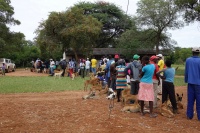 The AWARE team, in conjunction with the Vet Department, and accompanied by benefactors (and volunteers) Brian Rodgers and Lizzie Carrasco, has just returned from Sipepa in the Tsholotsho Communal Land on the southern border of Hwange National Park where they carried out a sterilisation and vaccination campaign of domestic dogs in which 68 dogs (mosly females) were sterilised, and more than 1900 dogs were vaccinated for rabies and dewormed. Of these, 950 dogs also received 5n1 vaccine, protecting them (and the wildlife they come into contact with) from the dreaded distemper and parvo viruses. Distemper has been known to wipe out entire prides of lions so we felt this was important to cover given the proximity of Hwange National Park. Whilst we were on the campaign 2 people (one child of 7 and one adult of 40) died of rabies in the district from being bitten by a rabid dog a month ago. Being fairly remote, they did not manage to get the post exposure rabies vaccines that can be life saving in this situation. Other tales of animals behaving strangely confirmed that rabies is rife in the area. Tick borne diseases were common amongst the dogs we saw and the first 1000 or so dogs received Frontline treatment to help protect them against the ticks. Read more in February 2015 newsletter...
The AWARE team, in conjunction with the Vet Department, and accompanied by benefactors (and volunteers) Brian Rodgers and Lizzie Carrasco, has just returned from Sipepa in the Tsholotsho Communal Land on the southern border of Hwange National Park where they carried out a sterilisation and vaccination campaign of domestic dogs in which 68 dogs (mosly females) were sterilised, and more than 1900 dogs were vaccinated for rabies and dewormed. Of these, 950 dogs also received 5n1 vaccine, protecting them (and the wildlife they come into contact with) from the dreaded distemper and parvo viruses. Distemper has been known to wipe out entire prides of lions so we felt this was important to cover given the proximity of Hwange National Park. Whilst we were on the campaign 2 people (one child of 7 and one adult of 40) died of rabies in the district from being bitten by a rabid dog a month ago. Being fairly remote, they did not manage to get the post exposure rabies vaccines that can be life saving in this situation. Other tales of animals behaving strangely confirmed that rabies is rife in the area. Tick borne diseases were common amongst the dogs we saw and the first 1000 or so dogs received Frontline treatment to help protect them against the ticks. Read more in February 2015 newsletter...
Buhera sterilisation campaign February 2014
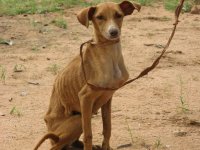 In February 2014 the AWARE team went to Mutiusinazita ('The tree with no name') in Buhera where we performed a dog sterilisation and vaccination campaign in conjunction with the Department of Veterinary Services. Late last year in Buhera a rabid hyena attacked and wounded 5 villagers, necessitating them to get preventative rabies inoculations. Subsequently there was a call for PWMA to poison the hyenas, as they were perceived as a danger to the villagers. The Vet Department is currently struggling with a shortage of resources, so in an attempt to mitigate the threat of rabies to both dogs and people, and hopefully quiet the calls for eradication of the hyenas, AWARE launched this sterilisation and vaccination initiative. AWARE vets vaccinated 1700 dogs for rabies, 200 of which also received a 5'n'1 vaccination, and 50 puppies received a parvo jab. 66 dogs were sterilised, the majority of which were lactating females in terrible condition. Approximately 750 doses of de-wormer and Frontline were also administered to the vaccinated dogs. We are appealing for financial assistance with the printing of pamphlets to explain how to handle dogs correctly, as much of the treatment of these dogs was cruel at best. Read more in March 2014 newsletter...
In February 2014 the AWARE team went to Mutiusinazita ('The tree with no name') in Buhera where we performed a dog sterilisation and vaccination campaign in conjunction with the Department of Veterinary Services. Late last year in Buhera a rabid hyena attacked and wounded 5 villagers, necessitating them to get preventative rabies inoculations. Subsequently there was a call for PWMA to poison the hyenas, as they were perceived as a danger to the villagers. The Vet Department is currently struggling with a shortage of resources, so in an attempt to mitigate the threat of rabies to both dogs and people, and hopefully quiet the calls for eradication of the hyenas, AWARE launched this sterilisation and vaccination initiative. AWARE vets vaccinated 1700 dogs for rabies, 200 of which also received a 5'n'1 vaccination, and 50 puppies received a parvo jab. 66 dogs were sterilised, the majority of which were lactating females in terrible condition. Approximately 750 doses of de-wormer and Frontline were also administered to the vaccinated dogs. We are appealing for financial assistance with the printing of pamphlets to explain how to handle dogs correctly, as much of the treatment of these dogs was cruel at best. Read more in March 2014 newsletter...
Victoria Falls Ndlovu Communal Area Sterilisation Campaign
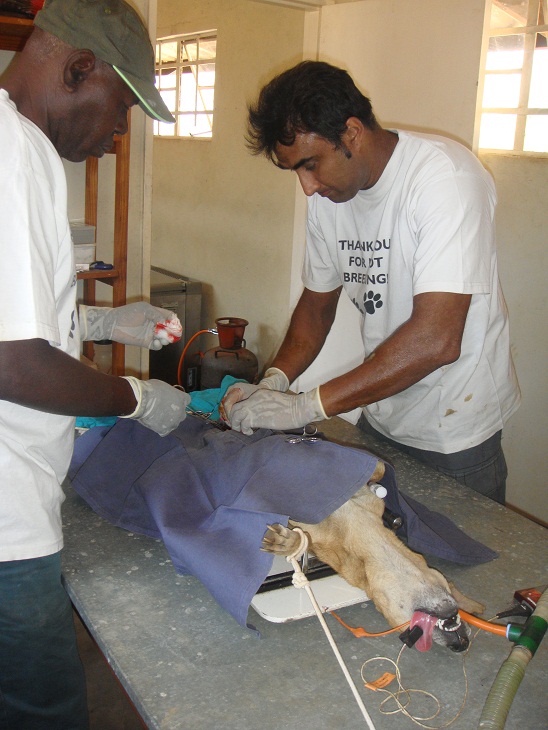
Kariba Sterilisation Campaign
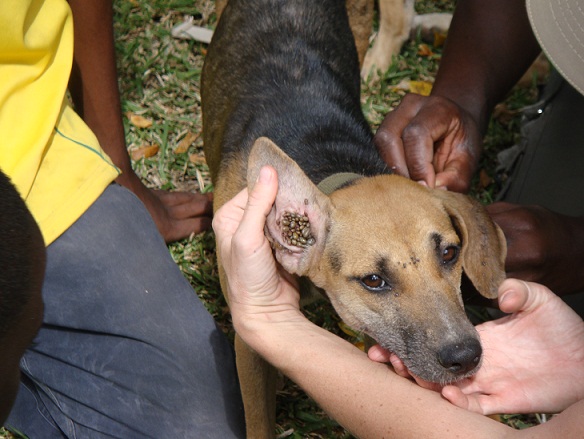 The AWARE team went to Kariba in May 2011 and performed another 57 sterilisations for underprivileged dog and cat owners. A further 187 dogs and 13 cats were vaccinated, de-wormed and Frontlined. Read more in May 2011 newsletter...
The AWARE team went to Kariba in May 2011 and performed another 57 sterilisations for underprivileged dog and cat owners. A further 187 dogs and 13 cats were vaccinated, de-wormed and Frontlined. Read more in May 2011 newsletter...
Malapati Sterilisation Campaign
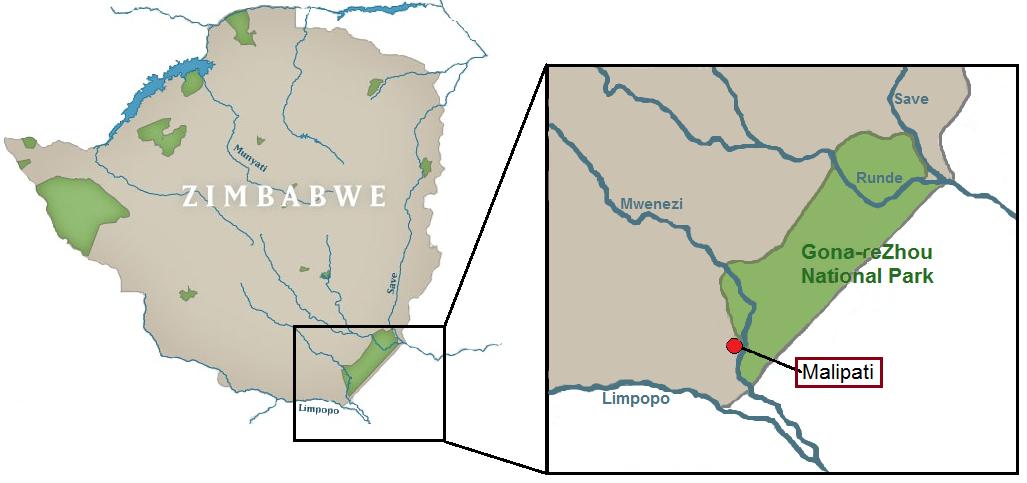 The AWARE sterilisation team ran a fourth campaign in Malapati, directly south of and adjacent to Gonarezhou National Park where they sterilised 68 dogs and 7 cats. 305 dogs were vaccinated using Merial's 7n1 plus rabies vaccine, and Frontlined and dewormed, following which Eric proceeded to Save Valley Conservancy to vaccinate a further 750 dogs. One suspected case of rabies was seen and euthanased. In the same area Eric treated 99 donkeys for a variety of conditions including tetanus and a donkey with a broken leg which was euthanased. Read more in October 2010 newsletter.
The AWARE sterilisation team ran a fourth campaign in Malapati, directly south of and adjacent to Gonarezhou National Park where they sterilised 68 dogs and 7 cats. 305 dogs were vaccinated using Merial's 7n1 plus rabies vaccine, and Frontlined and dewormed, following which Eric proceeded to Save Valley Conservancy to vaccinate a further 750 dogs. One suspected case of rabies was seen and euthanased. In the same area Eric treated 99 donkeys for a variety of conditions including tetanus and a donkey with a broken leg which was euthanased. Read more in October 2010 newsletter.
Third campaign run in Vic Falls luxury
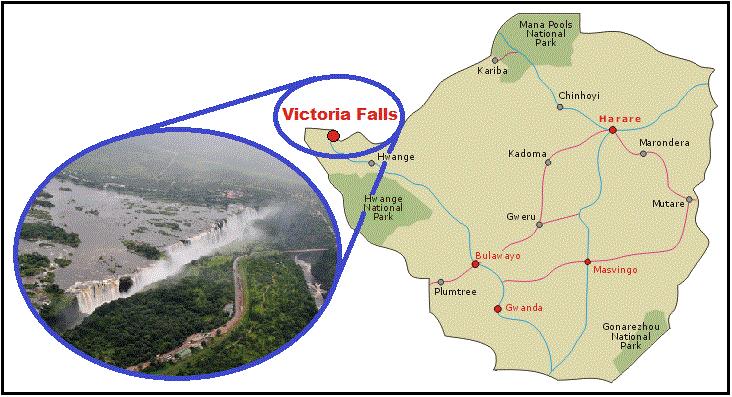 At the request of the ZNSPCA, AWARE performed a sterilisation and vaccination programme up at Victoria Falls town between April 18 and 28, 2010. Since the town lies within the Kavango Zambezi Trans Frontier Conservation Area (KAZA TFCA) and is entirely surrounded by National Parks (flanked on the east by Victoria Falls NP and on the west by Zambezi NP), it fitted in perfectly with AWARE's objectives to mitigate the threats posed to wildlife from domestic animals. The local community got together to give the team free hotel accommodation at the first rate Elephant Hills, Ilala Lodge, Lokuthula Lodge and Victoria Falls Hotel, which made life much easier than our normal forays into the bush. By the end of the programme we had done a total of 79 sterilisations, which included 26 bitch spays, 23 dog neuters, 20 cat spays and 10 cat neuters; we had also vaccinated a total of 300 dogs for 7’n’1 and Rabies, 22 puppies for Parvo and 36 cats with 3’n’1 and Rabies. Read more in April 2010 newsletter.
At the request of the ZNSPCA, AWARE performed a sterilisation and vaccination programme up at Victoria Falls town between April 18 and 28, 2010. Since the town lies within the Kavango Zambezi Trans Frontier Conservation Area (KAZA TFCA) and is entirely surrounded by National Parks (flanked on the east by Victoria Falls NP and on the west by Zambezi NP), it fitted in perfectly with AWARE's objectives to mitigate the threats posed to wildlife from domestic animals. The local community got together to give the team free hotel accommodation at the first rate Elephant Hills, Ilala Lodge, Lokuthula Lodge and Victoria Falls Hotel, which made life much easier than our normal forays into the bush. By the end of the programme we had done a total of 79 sterilisations, which included 26 bitch spays, 23 dog neuters, 20 cat spays and 10 cat neuters; we had also vaccinated a total of 300 dogs for 7’n’1 and Rabies, 22 puppies for Parvo and 36 cats with 3’n’1 and Rabies. Read more in April 2010 newsletter.
Second successful sterilisation and vaccination campaign in Machuchuta
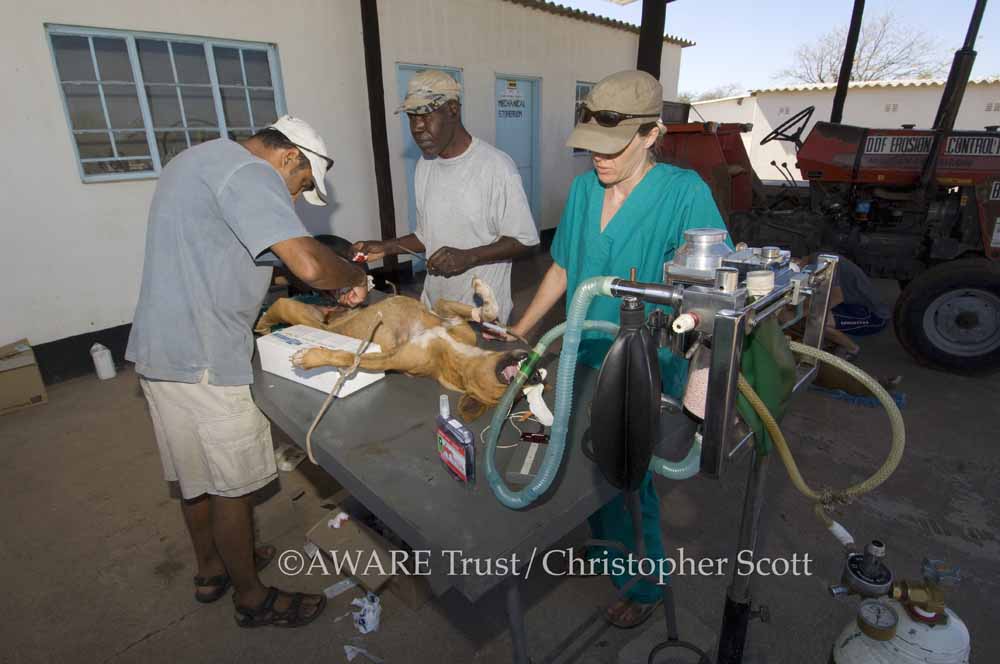 In November 2009 the AWARE Trust team went to Machuchuta Communal Land in the LSTFCA where it successfully completed the second of its dog sterilisation, vaccination and health care clinics. Machuchuta, which is 140km west of Beitbridge, is adjacent to Maramani Communal Land where the first spay campaign was run, and 24km east of the Tuli Circle Safari Area. It is more remote and less populated than Maramani. A further 55 dogs were sterilised. All dogs were vaccinated, de-wormed and Frontlined as before, and received food and their owners received a T-shirt. Blood samples were taken from each dog that was sterilised in order to determine its haematocrit (percentage of red blood cells in the blood), and to study what pathogens the dogs have been exposed to. A normal haematocrit for dogs is considered to be between 30 and 50%, below which a dog is considered to be anaemic. We were horrified at some of the haematocrit readings, which were as low as 14%, with an average of 23% and only 20/55 dogs having a haematocrit above 25%. The extreme state of nutritional stress in these animals arises mainly from being left to scavenge, lactation in females, internal and external parasites (worms, ticks and fleas), and possibly other diseases. Transmissable venereal tumour (TVT) was particularly prevalent in the dogs in Machuchuta. Read more in our November 2009 newsletter.
In November 2009 the AWARE Trust team went to Machuchuta Communal Land in the LSTFCA where it successfully completed the second of its dog sterilisation, vaccination and health care clinics. Machuchuta, which is 140km west of Beitbridge, is adjacent to Maramani Communal Land where the first spay campaign was run, and 24km east of the Tuli Circle Safari Area. It is more remote and less populated than Maramani. A further 55 dogs were sterilised. All dogs were vaccinated, de-wormed and Frontlined as before, and received food and their owners received a T-shirt. Blood samples were taken from each dog that was sterilised in order to determine its haematocrit (percentage of red blood cells in the blood), and to study what pathogens the dogs have been exposed to. A normal haematocrit for dogs is considered to be between 30 and 50%, below which a dog is considered to be anaemic. We were horrified at some of the haematocrit readings, which were as low as 14%, with an average of 23% and only 20/55 dogs having a haematocrit above 25%. The extreme state of nutritional stress in these animals arises mainly from being left to scavenge, lactation in females, internal and external parasites (worms, ticks and fleas), and possibly other diseases. Transmissable venereal tumour (TVT) was particularly prevalent in the dogs in Machuchuta. Read more in our November 2009 newsletter.
Groundbreaking sterilisation campaign in Maramani
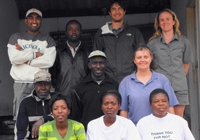
In May 2009, the AWARE Trust team set out for Maramani Communal Land to perform its pilot dog sterilisation and vaccination programme. Maramani, which is 110km west of Beitbridge, was chosen because of its location within the Limpopo-Shashe (or Greater Mapungubwe) Trans-Frontier Conservation Area (LS/GMTFCA). Between the 5th and 12th of May 2009 AWARE spayed 44 bitches and castrated 46 male dogs in Maramani making a total of 90 sterilisations. 165 dogs were vaccinated, Frontlined and de-wormed and several more were treated for illness. Dogs were blood sampled for further study on exposure to pathogens. All dogs went home with 1kg of Fetch dog food to help them through their convalescence and their owners received a free T-shirt.Two cases of accidental poisoning were seen where dogs had eaten poisoned bait that was set for hyaenas. This is just one incidence of human-wildlife conflict which AWARE intends to address by means of education campaigns. Read more in our May 2009 newsletter

